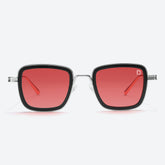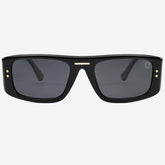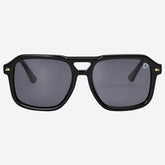What Is the Cost of Prescription Glasses?
If you've just come out of your annual eye exam with a prescription, you're not alone. According to reports, 63.7% of adults and 1 in 4 children in the USA wear glasses.
You may feel intimidated by choosing which prescription glasses you should buy as they have a wide price range. You might even wonder if the price point is all that matters. However, the truth is the final price of your glasses depends on your individual situation.
This article will reveal the average price of prescription glasses and what factors affect this price.

The Average Cost of Prescription Glasses
You can purchase glasses to correct your vision for as little as $8 with no insurance upto $1000 with or without insurance. However, Americans spend on average $196 with insurance and $50 – $1000 without any. More specifically, these costs include the frame, lens, and the add-ons.
However, there are other costs that affect your overall purchase price, such as the cost of the mandatory exam with an ophthalmologist. There, you need to pay for the exam, and this price depends on whether this is your first exam or you're a repeat patient. On average, this exam costs $144.
Nevertheless, there are ways to lower the cost of your glasses: insurance. If your insurance covers prescription eyeglasses, they may pay a certain percentage of the cost or a lump sum. Depending on the initial cost of the glasses, that can greatly reduce their cost. Plus, your insurance may fully cover the cost of some parts of the glasses, such as the lenses.
Here's a breakdown of the costs of your prescription eyewear:
|
Features and Exams |
Cost with Insurance |
Cost without Insurance |
|
Single-Lens |
$0 – $50 |
$107 |
|
Average Frame Price |
$262 |
$230 |
|
Add-ons |
$20 – $100 |
$20 – $100 |
|
Average Glasses Price (without exam) |
$160 – $326 |
$337 |
|
Initial Eye Exam |
$0 – $180 |
$200 |
|
Repeat Eye Exam |
$0 – $180 |
$150 – $150 |
|
Average Eye Exam |
$10 – $25 |
$194 |
|
Final Glasses Price Range |
$50 – $1000+ |
$8 – $1000+ |
What Affects the Cost of Prescription Glasses?

With a price range as wide as $8 – $1000+, understanding what creates this disparity will allow us to make a sound financial decision. However, a large price tag does not immediately mean that these glasses are better in quality.
When it comes to figuring out the cost of your prescription eyewear, several factors come into play. Here's a breakdown of what can affect the price:
1. Frame Brand and Features
The frame is potentially the biggest cost when it comes to glasses. If you buy ready-made frames, they can cost as little as $8. You simply pick the one that best fits your head, and the lenses are then added to the frame. Yet, these glasses may not fit you well or may break easily.
However, brand frames such as the ones Gold & Wood Prestige sells can cost as much as $55,000. This change in price comes from:
- The uniqueness of each pair of glasses
- Level of Craft
- Quality of material
- Popularity and prestige of the brand
In fact, this brand makes their glasses in 18-carat solid/plated gold, rare wood species, buffalo horn, carbon fiber, diamonds, and hand-painted silk. Meanwhile, cheaper glasses could have a simple plastic frame.
2. The Type of Lens
In general, single lenses usually don't cost any more than $107 without insurance and $50 with it, other types of lenses can cost over $600. This is because single-lens or single-vision lenses only correct one vision problem, so their manufacturing is simpler.
Conversely, the other types of lenses take more effort to make and include multiple prescriptions. Here are the different types of lenses:
- Bifocal Lenses: 'Double' or 'bifocal' lenses have two different prescriptions. Usually, the top part allows you to see far, while the bottom makes nearer objects clearer. This is especially useful for those needing to correct their vision in two ways: those with farsightedness and presbyopia.
- Trifocal Lenses: With trifocal lenses, you can see in three fields of vision: Far, near, and in the middle. Like bifocal lenses, the trifocal ones allow you to see far from the top and near the bottom of the lens. However, trifocal lenses have a middle section that gives you the ability to see in between near and far.
- Progressive Lenses: Progressive lenses gradually shift between prescriptions. The top will allow you to see far, and then the prescription will change gradually until you look down, where you can see objects near you.
Here are the differences in lens prices:
|
Lens Type |
Cost |
|
Single |
$10 – $700 |
|
Bifocal |
$70 – $600 |
|
Trifocals |
$120 – $400 |
|
Progressive |
$85 – $1,500 |
Moreover, the material of the lens can further increase the cost of prescription glasses as well as provide other features. For example, polycarbonate lenses are anti-scratch, while the 'photochromic' or 'transition' lenses react to UV light, turning your prescription eyeglasses into sunglasses too, whenever you're in sunlight.
3. Your Insurance
You can reduce the cost of your glasses by using your insurance. Usually, your insurance can cover the totality or a percentage of the price of the eye exam, frames, and lenses. Therefore, you can consider your insurance payments as a part of the price of your glasses and the eye exam.
Whether you have employer or individual insurance, the specific plans and benefits you have access to will determine if and how much it will cover the cost of your glasses. Usually, your monthly payments to your insurance company that goes toward your eye healthcare are around $10 – $30.
4. Add-ons Features
You can add a variety of features to your glasses to make your daily life more comfortable and increase their functionality. These extra features come in the form of an extra layer over your lenses. Typically, these add-ons increase the base cost of prescription glasses by $20 – $30.
Here are glasses add-on features you can purchase:
- Tint: A tint changes the color of your lenses, also making the color as dark as you wish. By changing the color of the glasses, you can protect your eyes from UV light, increase the contrast in your vision, or reduce the amount of blue light that enters your eyes. You can also select a color that helps soothe your eyes if you're sensitive to light.
- Blue Light Blocker: The blue light blocker or 'filter' tints your lenses to block blue light. This feature allows your body to wind down by filtering out the blue light, which keeps you alert during the day.
- Anti-Glare: The 'anti-glare' or 'anti-reflection' feature prevents light from reflecting off of your glasses. Therefore, you can take pictures with a flash and still clearly see your eyes in the picture. Plus, you'll also see more light through your glasses than if it didn't have an anti-glare coating.
- Anti-Fog: This feature prevents fogginess due to temperature change. Therefore, when you're wearing a scarf or mask or while you're cooking in cold weather, the glasses stay clear.
- Hydrophobic Coating: This coating prevents water from clinging to the glasses. Additionally, it protects from dust and dirt.
5. Type of Vendor
You can purchase glasses from different places from a doctor's office, a retail store, or online stores. Where you buy them will affect the price. Usually, doctor's offices tend to have high quality but expensive glasses. In contrast, retail and online stores tend to offer a wider range in terms of prices.
6. Longevity of the Glasses
Though you can purchase $8 glasses, they might cost you more in the long term if you have to replace them often because they are fragile. Therefore, a pair of glasses with anti-scratch lenses and a strong frame could cost you less in the long term.
Similarly, if you're buying glasses for your child, the glasses can't last years because even if you keep them in pristine condition, your child will outgrow them. In that case, you need also to consider this type of longevity.
7. Adjustments to Your Glasses

Lastly, when you buy glasses online or ready-made ones, you might need to adjust the arms and nose pieces so that they comfortably fit your face. Therefore, you might reduce the initial cost of shopping in an online or retail store, but you should consider any costs you may incur from adjusting these glasses.
Nevertheless, some physical and online vision stores allow you to try on glasses so that you can pick the right frame. Alternatively, they may allow you to send your glasses back by mail so that they can send you a pair that fits you better.
Conclusion
Conclusively, the cost of prescription glasses is anywhere from $8 – $1,000+. While designer glasses can cost over $50,000, most Americans buy glasses at around $160 – $326 with insurance and $337 without them. However, rather than looking at the end price point, you should consider the features you wish to have in your glasses.
Another thing to consider is where you buy your glasses. Doctor offices offer quality selections that are expensive. In comparison, retail and online stores like Dollger offer a wider range of glasses at a much more affordable price. So, balance these factors the next time you replace your glasses or get new ones.





